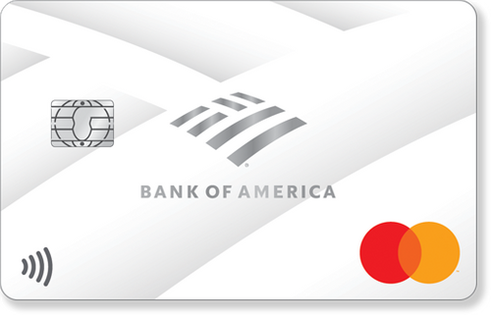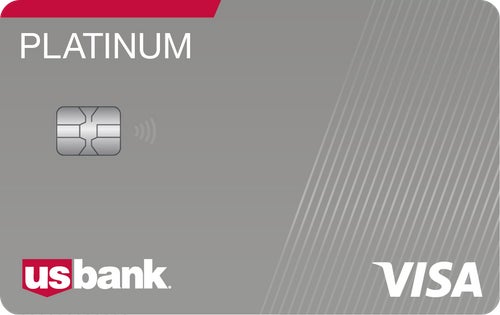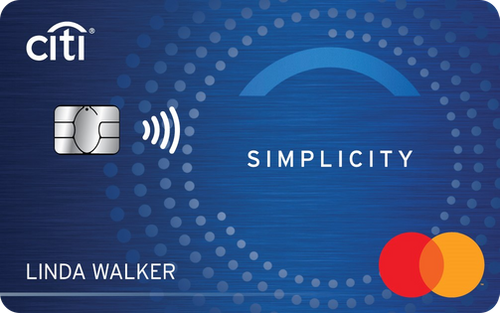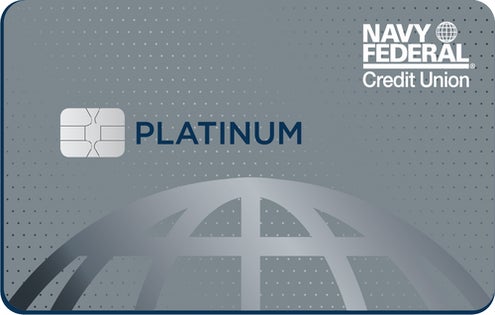Prices of everyday essentials remain high across the US, with debt also continuing to rise. By the end of 2022, credit card debt hit new highs, rising to $930.6 billion -- an 18.5% increase from 2021, according to a recent TransUnion report. And with the average American carrying over $5,805 in credit card debt, and APRs continuing to increase following the latest Fed rate hike, you’re not alone if you’re finding it hard to tackle multiple money priorities.
To get back on track, you’ll want to find the right way to wrangle your credit card debt. While a debt consolidation loan can offer a lower, fixed-interest rate to help you pay down your debt with more predictable payments, a balance transfer credit card can offer you a respite from high interest rates.
A balance transfer card allows you to move your existing debt onto a new card, generally with no interest charges for a period of time. So, if you were to transfer your debt onto a card with a 12-month introductory APR offer, you would have 12 months to make payments on your debt interest-free. But balance transfer cards come with risks -- you’ll need to make minimum monthly payments and have a plan to repay your balance before interest kicks in. You’ll also usually pay a 3% to 5% balance transfer fee. But, when leveraged responsibility, a balance transfer offer can help you pay off your debt and save on interest.
If you don’t have existing debt but need to finance a purchase, a 0% introductory APR card can help you make a large purchase now and pay back the balance monthly without accruing interest for a period of time. While we don’t recommend using credit cards to finance purchases -- it’s better to pay off your card in full each month -- a 0% intro APR card can come in handy.
Whether you want to chip away at an existing balance or have a card available for financing, here are some of the best cards for paying off debt.
Best credit cards for paying off debt
- Intro Offer
-
No current offer
- Annual fee
- $0
- APR
- 15.74% – 25.74% Variable APR on purchases and balance transfers
- Recommended Credit A credit score is used to indicate an applicant’s credit worthiness and may provide guidance about account eligibility. It does not necessarily guarantee approval for any financial product.
-
670 – 850
Good – Excellent
- Rewards rate
-
N/A This card doesn’t offer cash back, miles, or points
This online only offer may not be available if you leave this page or if you visit a Bank of America financial center. You can take advantage of this offer when you apply now.
The BankAmericard® credit card offers one of the best ways to use a balance transfer to knock out some of your credit card debt. You’ll have 21 billing cycles to pay down a transferred balance at 0% introductory interest before the standard APR of 15.74% to 25.74% variable applies.
You’ll need to make any balance transfers within the first 60 days of account opening to qualify, but you’ll only need to pay a balance transfer fee of 3% of the amount of each transaction when doing so. This is an average balance transfer fee. While some cards offer no balance transfer fees, the tradeoff is typically a shorter APR period.
That fee -- 3% of a transferred balance -- pales in comparison to what you’d likely end up spending on interest charges on a balance from another credit card. The card also gives you the same introductory period for new purchases.
For more information, see our full review of the BankAmericard credit card.
- Intro Balance Transfer APR
- 0% Intro APR for 21 billing cycles for any BTs made in the first 60 days. A 3% fee applies.
- Intro Purchase APR
- 0% Intro APR for 21 billing cycles for purchases
- Regular APR
- 15.74% – 25.74% Variable APR on purchases and balance transfers
- Balance Transfer Fee
- 3% of the amount of each transaction
This online only offer may not be available if you leave this page or if you visit a Bank of America financial center. You can take advantage of this offer when you apply now.
The BankAmericard® credit card offers one of the best ways to use a balance transfer to knock out some of your credit card debt. You’ll have 21 billing cycles to pay down a transferred balance at 0% introductory interest before the standard APR of 15.74% to 25.74% variable applies.
You’ll need to make any balance transfers within the first 60 days of account opening to qualify, but you’ll only need to pay a balance transfer fee of 3% of the amount of each transaction when doing so. This is an average balance transfer fee. While some cards offer no balance transfer fees, the tradeoff is typically a shorter APR period.
That fee -- 3% of a transferred balance -- pales in comparison to what you’d likely end up spending on interest charges on a balance from another credit card. The card also gives you the same introductory period for new purchases.
For more information, see our full review of the BankAmericard credit card.
- Intro Balance Transfer APR
- 0% Intro APR for 21 billing cycles for any BTs made in the first 60 days. A 3% fee applies.
- Intro Purchase APR
- 0% Intro APR for 21 billing cycles for purchases
- Regular APR
- 15.74% – 25.74% Variable APR on purchases and balance transfers
- Balance Transfer Fee
- 3% of the amount of each transaction
- Intro Offer
-
No current offer
- Annual fee
- $0
- APR
- 19.49% – 29.49% (Variable)
- Recommended Credit A credit score is used to indicate an applicant’s credit worthiness and may provide guidance about account eligibility. It does not necessarily guarantee approval for any financial product.
-
670 – 850
Good – Excellent
- Rewards rate
-
N/A This card doesn’t offer cash back, miles, or points
If you have a large expense coming up, you’ll have room to breathe with 18 billing cycles of introductory no-interest payments on purchases and balance transfers (19.49% to 29.49% variable APR thereafter). This is one of the longest introductory APR periods for purchases on the market, or you can use a balance transfer to minimize interest charges if you’re still trying to pay off a previous large purchase.
For more details, see our full review of the U.S. Bank Visa Platinum Card.
- Intro Balance Transfer APR
- 0% intro APR for 18 billing cycles on balance transfers
- Intro Purchase APR
- 0% intro APR for 18 billing cycles on purchases
- Regular APR
- 19.49% – 29.49% (Variable)
- Balance Transfer Fee
- Either 3% of the amount of each transfer or $5 minimum, whichever is greater
If you have a large expense coming up, you’ll have room to breathe with 18 billing cycles of introductory no-interest payments on purchases and balance transfers (19.49% to 29.49% variable APR thereafter). This is one of the longest introductory APR periods for purchases on the market, or you can use a balance transfer to minimize interest charges if you’re still trying to pay off a previous large purchase.
For more details, see our full review of the U.S. Bank Visa Platinum Card.
- Intro Balance Transfer APR
- 0% intro APR for 18 billing cycles on balance transfers
- Intro Purchase APR
- 0% intro APR for 18 billing cycles on purchases
- Regular APR
- 19.49% – 29.49% (Variable)
- Balance Transfer Fee
- Either 3% of the amount of each transfer or $5 minimum, whichever is greater
- Intro Offer
-
No current offer
- Annual fee
- $0
- APR
- 18.99% – 29.74% (Variable)
- Recommended Credit A credit score is used to indicate an applicant’s credit worthiness and may provide guidance about account eligibility. It does not necessarily guarantee approval for any financial product.
-
670 – 850
Good – Excellent
- Rewards rate
-
N/A This card doesn’t offer cash back, miles, or points
The Citi Simplicity® Card* is no-frills -- there are no rewards to earn, but you’ll get 21 months at 0% intro APR for balance transfers (and 12 months on purchases). After the intro period, an 18.99% to 29.74% variable APR applies. Plus, you have four months to complete a balance transfer, which is longer than most cards allow.
The Citi Simplicity® Card is one of the most flexible and forgiving cards when you’re paying off debt. If you tend to forget a payment now and then, you won’t have to worry about late fees or getting hit with a penalty APR.
- Intro Balance Transfer APR
- 0% for 21 months on Balance Transfers
- Intro Purchase APR
- 0% for 12 months on Purchases
- Regular APR
- 18.99% – 29.74% (Variable)
- Balance Transfer Fee
- There is an intro balance transfer fee of 3% of each transfer (minimum $5) completed within the first 4 months of account opening. A balance transfer fee of 5% of each transfer ($5 minimum) applies if completed after 4 months of account opening.
The Citi Simplicity® Card* is no-frills -- there are no rewards to earn, but you’ll get 21 months at 0% intro APR for balance transfers (and 12 months on purchases). After the intro period, an 18.99% to 29.74% variable APR applies. Plus, you have four months to complete a balance transfer, which is longer than most cards allow.
The Citi Simplicity® Card is one of the most flexible and forgiving cards when you’re paying off debt. If you tend to forget a payment now and then, you won’t have to worry about late fees or getting hit with a penalty APR.
- Intro Balance Transfer APR
- 0% for 21 months on Balance Transfers
- Intro Purchase APR
- 0% for 12 months on Purchases
- Regular APR
- 18.99% – 29.74% (Variable)
- Balance Transfer Fee
- There is an intro balance transfer fee of 3% of each transfer (minimum $5) completed within the first 4 months of account opening. A balance transfer fee of 5% of each transfer ($5 minimum) applies if completed after 4 months of account opening.
- Intro Offer
-
No current offer
- Annual fee
- None
- APR
- 8.99% – 18.00% Variable
- Recommended Credit A credit score is used to indicate an applicant’s credit worthiness and may provide guidance about account eligibility. It does not necessarily guarantee approval for any financial product.
- N/A
- Rewards rate
-
N/A This card doesn’t offer cash back, miles, or points
The Navy Federal Credit Union® Platinum Credit Card* is the lowest-fee card in our roundup of best credit cards for paying off debt. Besides no annual fee, it’s the only card on our list with no balance transfer fee. This is a big deal -- most cards charge a minimum of 3% as a balance transfer fee. (That’s $300 on a $10,000 balance transfer.) If you plan on making multiple balance transfers, it’s good to know you won’t be incurring charges for paying off your debt.
- Intro Balance Transfer APR
- 0% intro APR for 12 months on balance transfers
- Intro Purchase APR
- N/A
- Regular APR
- 8.99% – 18.00% Variable
- Balance Transfer Fee
- N/A
The Navy Federal Credit Union® Platinum Credit Card* is the lowest-fee card in our roundup of best credit cards for paying off debt. Besides no annual fee, it’s the only card on our list with no balance transfer fee. This is a big deal -- most cards charge a minimum of 3% as a balance transfer fee. (That’s $300 on a $10,000 balance transfer.) If you plan on making multiple balance transfers, it’s good to know you won’t be incurring charges for paying off your debt.
- Intro Balance Transfer APR
- 0% intro APR for 12 months on balance transfers
- Intro Purchase APR
- N/A
- Regular APR
- 8.99% – 18.00% Variable
- Balance Transfer Fee
- N/A
- Intro Offer
-
Cashback Match™ Intro Offer: Unlimited Cashback Match – only from Discover. Discover will automatically match all the cash back you’ve earned at the end of your first year! So you could turn $50 cash back into $100. Or turn $100 into $200. There’s no minimum spending or maximum rewards. Just a dollar-for-dollar match.
- Annual fee
- $0
- APR
- 17.74% – 26.74% Variable APR
- Recommended Credit A credit score is used to indicate an applicant’s credit worthiness and may provide guidance about account eligibility. It does not necessarily guarantee approval for any financial product.
- No Credit History
- Rewards rate
-
1% – 5% Earn 5% cash back on everyday purchases at different places each quarter like Amazon.com, grocery stores, restaurants, and gas stations, up to the quarterly maximum when you activate. ; Earn unlimited 1% cash back on all other purchases – automatically.
The Discover it® Student Cash Back* is designed for students who lack a long, positive credit history. If you’re a student, you’ll still have access to a 0% introductory APR on new purchases -- albeit for only six months (17.74% to 26.74% variable APR thereafter). However, it may be long enough to pay down the debt before the standard APR kicks in. As for balance transfers, Discover offers a 10.99% introductory interest rate for the first six months after the initial transfer (then 17.74% to 26.74% variable APR).
- Intro Balance Transfer APR
- 10.99% for 6 months
- Intro Purchase APR
- 0% for 6 months
- Regular APR
- 17.74% – 26.74% Variable APR
- Balance Transfer Fee
- 3% intro balance transfer fee, up to 5% fee on future balance transfers (see terms)*
The Discover it® Student Cash Back* is designed for students who lack a long, positive credit history. If you’re a student, you’ll still have access to a 0% introductory APR on new purchases -- albeit for only six months (17.74% to 26.74% variable APR thereafter). However, it may be long enough to pay down the debt before the standard APR kicks in. As for balance transfers, Discover offers a 10.99% introductory interest rate for the first six months after the initial transfer (then 17.74% to 26.74% variable APR).
- Intro Balance Transfer APR
- 10.99% for 6 months
- Intro Purchase APR
- 0% for 6 months
- Regular APR
- 17.74% – 26.74% Variable APR
- Balance Transfer Fee
- 3% intro balance transfer fee, up to 5% fee on future balance transfers (see terms)*
FAQs
It’s possible to pay down debt with a credit card. It may not be the best option, however, unless you can make good use of an extended no-interest period of 12 months or longer. Keep in mind that many of the best low- or no-interest offers are introductory and reserved for individuals with good credit or better. If you’re overwhelmed by debt, that could hurt your credit score and you may have trouble getting approved for a no-interest or low-balance-transfer card.
Some credit cards offer new cardholders a 0% (no interest) period for purchases and balance transfers. The interest-free term is typically only for a set amount of time, such as 12 or 18 months. This means that any purchases or balance transfers you make within the qualifying period can be paid back without interest during the introductory period. Once the term is up, the remaining balance will start accruing interest at the standard interest rate.
Even if you land a balance transfer credit card with a no-interest period of 12 months or longer, watch out for balance transfer fees. These fees are typically 3% to 5% of the amount you plan on transferring. While this may be manageable if you’re only dealing with a few hundred dollars of debt, the transfer fee can add up. A $5,000 balance can cost you $250 to transfer if the fee is 5%.
Credit cards with the best introductory and balance transfer offers typically require a good credit score of 670 or higher. However, some card providers have a prequalification tool, which tells you whether you’d be approved for a credit card before you apply without affecting your credit score. Capital One, Discover and Navy Federal all offer prequalification.
Our methodology
CNET reviews credit cards by exhaustively comparing them across set criteria developed for each major category, including cash-back, welcome bonus, travel rewards and balance transfer. We take into consideration the typical spending behavior of a range of consumer profiles -- with the understanding that everyone’s financial situation is different -- and the designated function of a card.
For cash-back credit cards, for example, key factors include the annual fee, the “welcome bonus” and the cash-back rate (or rates, if they differ by spending category). For rewards and miles cards, we calculate and weigh the net monetary value of a card’s respective perks. And with balance transfer credit cards, we analyze specs such as the duration of the introductory 0% APR period and the balance transfer fee, while acknowledging secondary factors such as the standard APR and the length of time you have to make a balance transfer after you open the account.
*All information about the Citi Simplicity Card, Navy Federal Credit Union Platinum Credit Card and the Discover it Student Cash Back has been collected independently by CNET and has not been reviewed by the issuer.
The editorial content on this page is based solely on objective, independent assessments by our writers and is not influenced by advertising or partnerships. It has not been provided or commissioned by any third party. However, we may receive compensation when you click on links to products or services offered by our partners.




